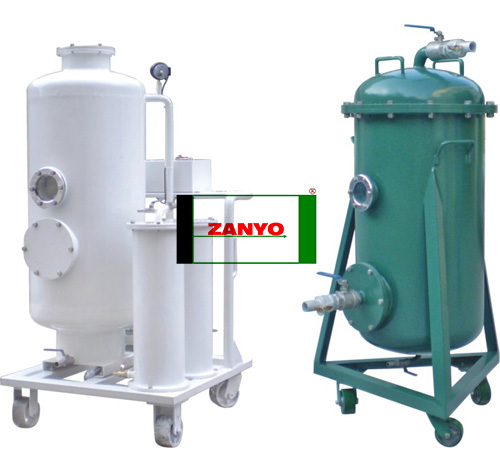Just How Regenerated Transformer Oil Sustains Sustainability Goals
Just How Regenerated Transformer Oil Sustains Sustainability Goals
Blog Article
How Regenerated Transformer Oil Prolongs Transformer Life Expectancy
The role of transformer oil is essential in making certain the reliability and longevity of transformers, serving as both an insulator and coolant. Restored transformer oil offers a compelling remedy to enhance these functions by effectively eliminating hazardous impurities that compromise efficiency.
Significance of Transformer Oil
Transformer oil plays a critical duty in the efficient procedure of electric transformers. It primarily works as a shielding medium, stopping electric discharges and making certain that parts run safely under high voltage conditions. The oil's dielectric buildings are essential to preserving the integrity of the transformer, as they reduce the threat of failures that could result in catastrophic events or costly downtimes.
In addition to its insulating capabilities, transformer oil also operates as a coolant. As transformers run, they create warm that has to be dissipated to stop getting too hot and subsequent damage. The oil flows within the transformer, moving and taking in warm away from crucial parts, consequently keeping optimal operating temperature levels.
Moreover, transformer oil functions as a barrier versus moisture and impurities, which can endanger the performance and long life of the transformer. Its chemical buildings help in counteracting acids and other results that might form gradually, adding to the overall wellness of the electrical system.
Advantages of Regenerated Oil

Furthermore, regenerated transformer oil has a reduced degree of contaminations, including fragments and contaminants that can deteriorate efficiency. This purity not only enhances the oil's thermal conductivity but also prolongs the operational lifespan of transformers by reducing overheating dangers. The improved thermal stability of regrowed oil guarantees consistent performance also under high operating temperatures, which is important for preserving transformer efficiency.
One more benefit is its ecological effect. Regenerated oil promotes sustainability by reducing waste and the demand for new oil production, thereby decreasing the carbon footprint linked with transformer maintenance. Reclaimed Transformer Oil. The durability of restored oil translates to reduced upkeep prices over time, as less oil modifications and much less regular tools downtime are called for.
Process of Oil Regrowth
The regrowth of transformer oil involves an organized process made to bring back the oil's original buildings and enhance its performance. This process commonly starts with the removal of the used oil from the transformer, which is then based on various purification techniques.
The initial step in the regeneration procedure is the purification, where solid pollutants such as sludge, metal, and dirt fragments are removed. This is commonly complied with by vacuum cleaner purification, which aids to remove dampness and unstable compounds, thus enhancing the oil's dielectric stamina.

Effect On Transformer Performance
Bring back the residential or commercial properties of regenerated transformer oil significantly influences the overall efficiency of transformers. Enhanced dielectric toughness is one of one of the most vital advantages, as it enables for better insulation and reduces the chance of electrical break down. This renovation results in a more steady operation under high voltage problems, inevitably leading to boosted performance.
Furthermore, the removal of contaminants and degradation items throughout the regrowth procedure reduces the danger of overheating. Cleanser oil helps with much better warm dissipation, which is essential for preserving optimal operating temperature levels. As a consequence, the thermal performance of the transformer is enhanced, enabling for higher tons without jeopardizing dependability.
In addition, the chemical stability of regenerated oil ensures long term functional life. It stands up to oxidation and degradation, decreasing the frequency of maintenance interventions and oil replacement. This stability not just adds to improved performance however also aligns with sustainability goals by reducing waste.
Future of Transformer Upkeep
As developments in modern technology remain to reshape the landscape of electrical engineering, the future of transformer upkeep is positioned for considerable transformation. The integration of smart technologies, such as IoT sensing units and anticipating analytics, makes it possible for real-time surveillance of transformer health, enhancing the ability to preemptively address concerns before they intensify right into major failings. This positive approach not only makes best use of operational performance but likewise expands the life-span of transformers.
Furthermore, the application of man-made intelligence (AI) in information evaluation allows for even more accurate fault detection and diagnosis. By leveraging device learning algorithms, maintenance groups can identify patterns in operational information that human experts may ignore, bring about more enlightened decision-making.
In addition, the adoption of environment-friendly practices, including making use of regenerated transformer oil, is set to redefine maintenance protocols. This sustainable strategy not just reduces environmental impact yet additionally improves the general Regenerated Transformer Oil health of the transformer.
Lastly, the shift towards automation in upkeep processes is expected to simplify procedures, minimize downtime, and reduced expenses. As these developments proceed to advance, the future of transformer upkeep will certainly come to be extra efficient, dependable, and sustainable, making sure the honesty of crucial electric facilities.
Conclusion
The utilization of regenerated transformer oil substantially improves the functional longevity of transformers. Inevitably, the adoption of regenerated oil stands for a crucial innovation in transformer maintenance, making sure ideal performance and sustainability in the administration of electric infrastructure.
The function of transformer oil is crucial in ensuring the dependability and durability of transformers, serving as both an insulator and coolant.Transformer oil plays an essential role in the efficient procedure of electric transformers. Regenerated oil promotes sustainability by decreasing waste and the demand for brand-new oil manufacturing, therefore decreasing the carbon impact linked with transformer maintenance.Recovering the homes of regenerated transformer oil significantly affects the overall performance of transformers.The utilization of regenerated transformer oil considerably improves the operational durability of transformers.
Report this page